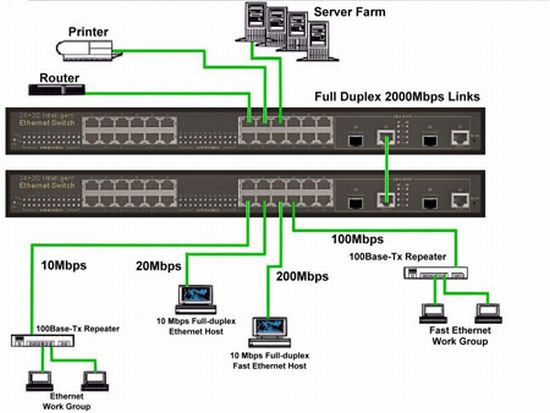Green ethernet
Energy-Efficient Ethernet is a set of enhancements to the twisted-pair and backplane Ethernet family of computer networking standards that will allow for less power consumption during periods of low data activity. The intention was to reduce power consumption by 50% or more, while retaining full compatibility with existing equipment.[1] The Institute of Electrical and Electronics Engineers (IEEE), through the IEEE 802.3az task force developed the standard. The IEEE ratified the final standard in September 2010.[2] Some companies introduced technology to reduce the power required for Ethernet before the standard was ratified, using the name Green Ethernet.In 2005, all the network interface controllers in the United States (in computers, switches, and routers) used an estimated 5.3 terawatt-hours of electricity.[3] According to a researcher at the Lawrence Berkeley Laboratory, Energy-Efficient Ethernet could save an estimated US$450 million a year in energy costs in the U.S.[4] Most of the savings from homes ($200 million), and offices ($170 million), and the remaining $80 million from data centers.[4] The first study group had its call for interest in November 2006, and the official standards task force was authorized in May 2007.[5]
















No comments:
Post a Comment